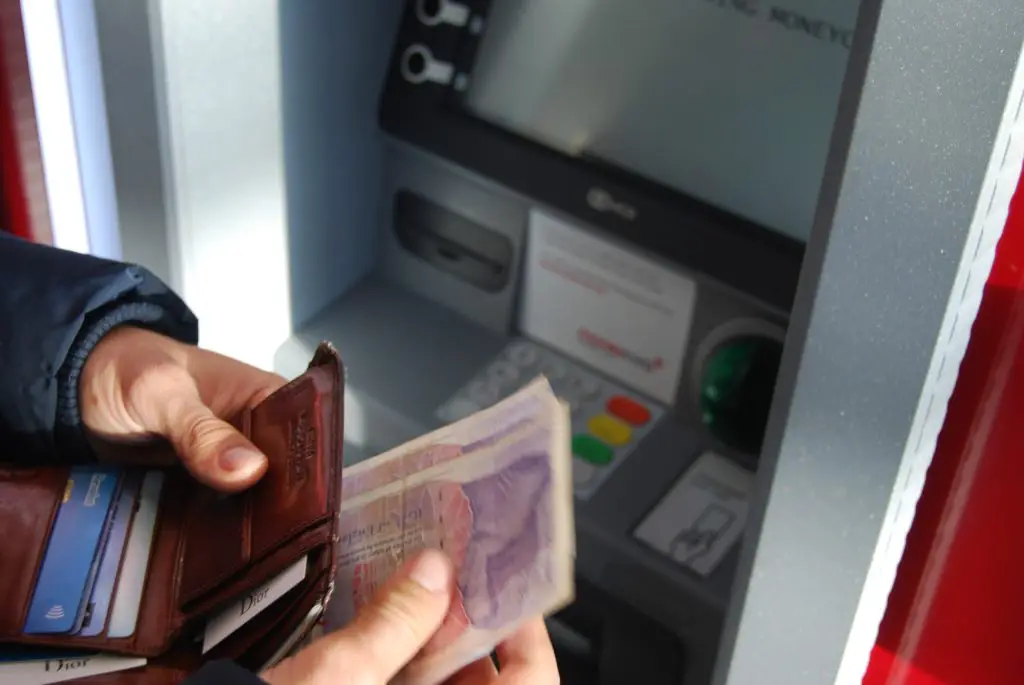Overdraft at an ATM- First, it is crucial to note that banks have varying overdraft policies – some of which may include, the inability to overdraw at the ATM. Due to this, you need to become acquainted with the policies governing overdrafts at your bank. Having done that, you will be clarified as to whether you can overdraw at the ATM or not.

If you can, there are certain steps and procedures to undertake before you are liable to get an overdraft at an ATM. For instance, to overdraw when your account balance is zero requires that you apply for overdraft protection. After you’ve done that, you will be able to overdraw even with insufficient funds in your account – but you’ll incur an imposed overdraft fee. These fees vary from bank to bank.
In this article, we will highlight ways how to overdraft at an ATM, as well as tricks to protect yourself from incurring high overdraft fees. If you would like to take charge of your finances and manage your spending, read on to learn everything you need to know about ATM overdraft withdrawals.
How To Overdraft At An ATM With Zero Balance?
Whether it is grocery shopping or bill payment, we all need extra cash at some point to settle expenses. You can simply overdraft to pay for your expenses and refund later. Note that to withdraw at an ATM with a zero account balance, you need to have applied for an ATM overdraft protection with your bank.
Naturally, your bank will decline every transaction you make with an account that has insufficient funds to cover your transaction – with no fees charged. Exceptions are only made to customers who have accepted and opted in for overdraft protection which comes along with an incurred fee whenever you use the ATM to withdraw cash from an insufficient balance.
In 2010, the Federal Reserve Board signed a rule that instate the need for customers to seek consent and authorize an agreement that they would be liable for ATM overdraft if they give in to the policies governing the service – which include overdraft fees. Before this time, Banks were charging overdraft fees on ATM withdrawals whether or not the customer agreed to it. This rule was imposed to ensure that individuals have complete authority over their finances.
What Banks Allow ATM Overdraft Withdrawals?
As stated earlier, financial institutions have different policies governing their mode of operation as well as overdraft procedures. However, if your bank offers an overdraft protection service, you will be able to overdraw at an ATM, as long as you have applied and provided the required details that guarantee you such service.
Highlighted below are some banks that allow overdrafts at an ATM.
- Region Bank
- KeyBank
- Wells Fargo
- TD Bank
- SunTrust
- Santander Bank
- Union Bank
- USA
- U.S Bank
- Citizens Bank
- HSBC Bank
- BB & T
- Bank Of America (BofA)
- Fifth Third Bank
- Citi
However, you may require the assistance of your account manager to walk you through the bank overdraft protection policy.
What Are The Daily Overdraft Limits On ATM Withdrawals?
To put it simply, there are no assigned limits to daily overdrafts on ATMs.
Although, the maximum limit for overdraft imposed on an account varies from bank to bank. One factor that contributes to having a higher overdraft limit is getting a good credit score. Contrary factors that could hinder ATM overdraft can be tied to the fact that you are unable to overdraft at other banks’ ATMs. Some banks have policies that only allow overdrafts to be accessible on their ATM.
As stated earlier, a general rule that governs overdrafts in all financial institutions states that account holders with poor or low credit scores are often restricted to a limited amount to overdraw – which is usually within $100 – $300. On the contrary, account holders with higher and excellent credit scores can be allowed to overdraw excess amounts from $1000 above.
Above all, banks operate on differing policies in regards to ATM overdraft. A typical example is that some banks do not permit non-users to overdraft, while others allow overdraft with smaller amounts.
How Does An ATM Overdraft Affect Your Credit Score?
Typically, the only way your credit score could be affected by a negative mark is when you do not pay what you owe within the assigned time frame. If you pay the incurred fees and negative balance (amount of money borrowed), you will not have to deal with a bad credit score. But, in situations when you are unable to pay what you owe, the bank will transfer your debts to collections. On this occasion, a collection account will be created for you and it will negatively reflect on your credit report.
Frequently Asked Questions
Q: How can I avoid an ATM overdraft?
A: Monitor your spending, link checking or savings account, and learn about your bank or credit card overdraft policy.
Q: How much do banks charge for overdraft fees?
A: Overdraft fees vary from bank to bank but are usually between $10 to $35
Q: How much can you overdraft within a period?
A: For people with good credit scores, you can overdraw up to $1000 and above but account holders with bad credit scores have a cash limit of $100-300.
Conclusion
ATM overdrafts allow for the extra cash needed when your account turns zero during an important transaction. Although, you will need to monitor your spending to avoid immersing yourself in an abyss of debt.
Whenever you can, make use of your bank ATM for overdraft, to avoid disapproval. Above all, make sure to pay what you owe as soon as you can to avoid negative remarks on your credit report that could lay a constraint on future overdraft.

